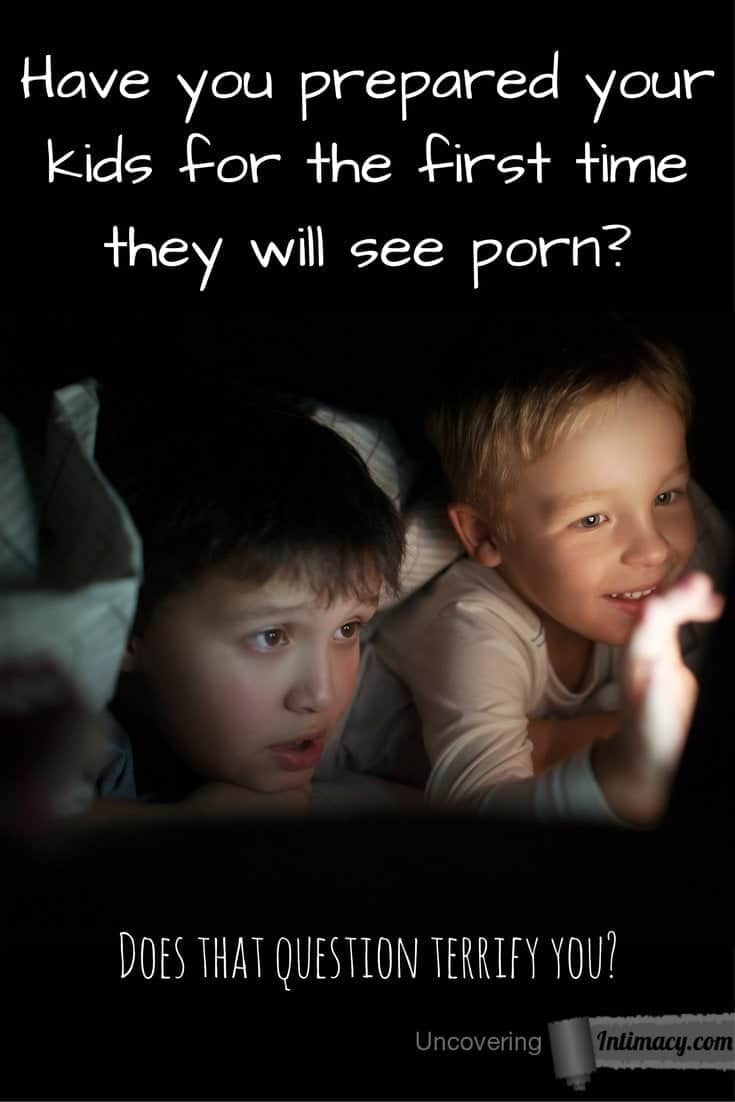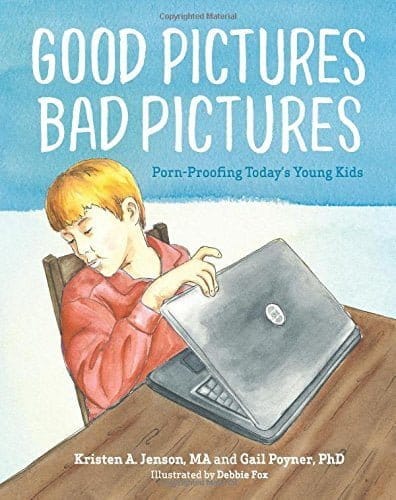 Your children will watch porn. Does that thought terrify you? It did for me the first time I thought it. And before you think, “No, I can keep them from it”, I’m sad to say you can’t. Not in this world that they’re growing up into. It’s is all but guaranteed your children (and mine) will see porn at some point while they’re still children. It may not even be intentional.
Your children will watch porn. Does that thought terrify you? It did for me the first time I thought it. And before you think, “No, I can keep them from it”, I’m sad to say you can’t. Not in this world that they’re growing up into. It’s is all but guaranteed your children (and mine) will see porn at some point while they’re still children. It may not even be intentional.
The porn industry is starting to target children, tagging the names of porn videos as things like “Dora the explorer” and other cartoons that they know kids are searching for on Google so that they might stumble upon it. And as good as Google is at guessing what it is we’re really looking for, it’s not infallible.
So, while I was growing up, the question was “How do I keep my kids from porn”, today the question becomes “How do I prepare my kids for seeing porn.” Scary, isn’t it?
I thought I’d share some things we are doing, and invite those parents with more experience to comment below.
1. Internet Filtering and Accountability
Even though I know that they’re going to see porn at some point, doesn’t mean I can’t do my best to delay it and protect them. We can’t just throw up our hands and say “Oh well, it’s going to happen, nothing we can do about that.”
So, this week I signed up for Covenant Eyes, a Christian company that makes software to filter the internet as well as hold people accountable to their idea of “safe browsing”.
Not only does it block websites based on the rating of the site, it also sends a report at whatever interval you want about the internet usage of the account.

So, let’s say your kid is browsing around on the net and comes across something they shouldn’t have. You’ll be able to see how they got there and how much time they spent (whether they closed it or were browsing the material). That gives you information to have a discussion with them right when they need it.
We’ve also installed the app on our phones and tablets because our children “borrow” our mobile devices a lot. Usually, it’s just to watch NetFlix, but once they have a phone, are you really sure what they’re doing? Even if they’re not intending to, let’s face it, the internet is a minefield.
And we have some hand-me-down devices that I’m going to install it on as well. You know, phones with any plans on them, but they still have wifi.
2. Talk about the problem before it is a problem
The general advice is to talk to them well before you think it’s going to be a problem. Unfortunately, the average age of the first pornography viewing is dropping radically in our world. The last stat I heard was that the average age is grade 6 (11 or 12 years old). Unfortunately, that’s the average. So if you’re thinking you can wait until age 11, you’re probably mistaken.
Many parents say that they talked to their kids at age 13 only to find out “they already know everything” or at least think they do. A thirteen-year-old thinking they know everything about sex because of their friends and the internet. Scary thought, eh? I mean, I’m 36 and I’m 100% confident I don’t know everything about sex yet.
So, how do we deal with this threat? Well, filtering and accountability aren’t enough. That only protects them from the devices we have control over. More and more I see my kid’s friends have their own devices, which I have no control over.
Instead, we need to help them build an internal filter. Knowing the difference between right and wrong. That starts with a dialogue between us as the parents and them.
Now, if that seems like a scary thing to you: a discussion about pornography with your kids, you’re not alone. Makes me uneasy as well. Thankfully, someone pointed out a resource to me to help, so I thought I’d share it with you.
There’s a great book called Good Pictures, Bad Pictures: Porn-Proofing Today’s Young Kids that’s written specifically for parents to read to their children. It’s illustrated like a children’s book and written in a way that’s easy to read and understand for a seven-year-old (their suggested age for starting the discussion). Most importantly, the chapters are basically the opening dialogue for you and your kids. The chapters are:
- What is pornography?
- What’s an addiction
- My feeling brain
- My thinking brain
- My two brains work together
- My brain’s attraction center
- How pornography tricks the brain into an addiction
- My thinking brain’s can do plan
- I can escape the poison of pornography
Now only is it a create way to talk about pornography in a healthy way, but it also gives specific examples of how to avoid it and what to do when you see it. And it encourages children to tell their parents when that happens. That’s really what you want: to create an honest, open, ongoing and shame-free dialogue between you and you children. That may feel a bit uncomfortable, but it’s far better than the alternative.
While this book isn’t written specifically for a Christian audience, I find it adapts well to Christian teachings as well. Our feeling brain vs thinking brain is a very biblical concept. We know there is a war between the parts of our brain, Paul talks about it often in his writing.
For what I am doing, I do not understand. For what I will to do, that I do not practice; but what I hate, that I do. If, then, I do what I will not to do, I agree with the law that it is good. But now, it is no longer I who do it, but sin that dwells in me. For I know that in me (that is, in my flesh) nothing good dwells; for to will is present with me, but how to perform what is good I do not find. For the good that I will to do, I do not do; but the evil I will not to do, that I practice. Now if I do what I will not to do, it is no longer I who do it, but sin that dwells in me. – Romans 7:15-20
So, while this book is not a “Christian” book, it works well to lay the foundations of understanding the danger of temptation from a psychological and physiological stance and gives you, the parent, room to fill in the spiritual one. These are concepts that will help our children in dealing with all areas of life, not just with pornography.
Is there any hope?
Last week I was at a homeschooling convention and one of the talks was on pornography. I didn’t really like it. You know why? There was no hope. His entire talk was fearmongering and scaring parents into action. I don’t want to be that guy.
I want to help equip you so that you can feel at peace knowing you are doing what can be done. We can’t keep our kids safe from the world, but we can prepare them to meet it. So, if you are concerned about the threat of pornography and don’t feel equipped to prepare them, check out Covenant Eyes for filtering and accountability to help keep them from it as long as possible, and to warn you when they do find it. Then Good Pictures, Bad Pictures to help you prepare them for the day they do come face to face with it.
We can prepare our children to give them the best chance if we meet the threat head on. We can’t bury our heads in the sand on this one, even if it is uncomfortable.
How are you preparing your kids? I’d love to know. Share in the comments section


